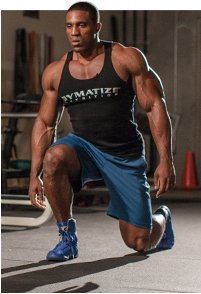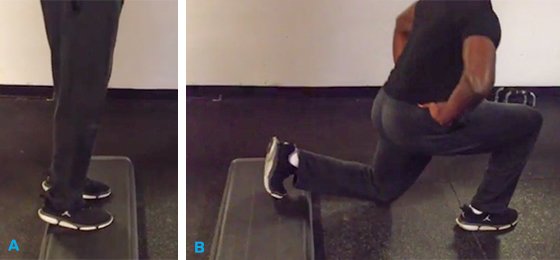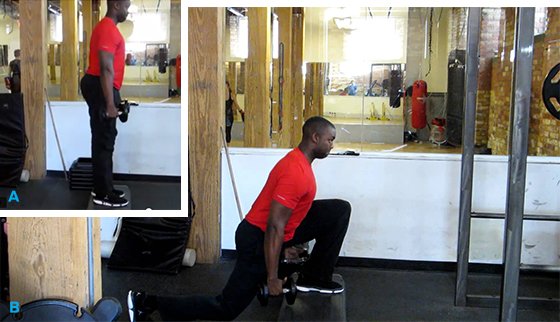It seems like every strength trainer has a "cutting-edge" training method for legs that deviates from basic principles and exercises proven to produce results. I've seen countless variations of these lower-body training programs, and I'm constantly baffled at the lack of love for lunges. It's time to restore lunges to their proper place in the strength-training universe!
Lunges and lunge variations are key accessory movements to improve your squat and deadlift. They're also functional, challenging, metabolically demanding, and great for adding some beef to your thighs. Adding lunges to your training regimen will provide positive carryover into most strength-training exercises.
If you already have lunges in your program, this primer will help you perform them with perfect form. It will also teach you new variations to specifically overload certain muscle groups. If you're new to the world of lunges, this guide will teach you how to master the exercise with your own bodyweight before adding extra resistance. Either way, this is your guide to taking the lunge for greater gains.
Lee Boyce On Lunge Variations
Watch The Video - 04:18
Perfect Lunge Execution
"Perfect" is a word many strength coaches refuse to use, but I believe it has a place. The perfect rep for any movement requires pinpoint execution and a specific target muscle. Lunge form is tricky because it requires multiple body parts to move in unison. The difficulty is increased exponentially when you add weights or other exercise equipment to the movement.
With that said, you can get closer to perfect with some simple queues. Here's a three-point guide to executing the walking lunge, the most classic and universal lunge variation.

- Keep your spine erect with no wavering forward, backward, or side to side. If you're traveling in a forward direction, your body can be slightly tilted forward to keep momentum and kinetic energy rolling, but you should always be able to draw a straight line from the top of your head to the knee of your trailing leg.
- Bring the knee of the trailing leg to the floor to encourage proper stride length and a strong stretch in the quads and hips. The knees should always point straight ahead. In the bottom position of your walking lunge, the worst mistake you can make is to allow the knees to travel inward and out of alignment with your ankles, shoulders, and hips.
- The entire foot of the lead leg must maintain contact with the floor even though your momentum is carrying you forward. A proper walking lunge loses balance and stability when the toes or the ball of the leading foot come off the floor.
Advanced Lunge Variations
Lunges can be tailored to target and challenge certain muscle groups more than others. By manipulating the stance, stride, or load of a lunge, you can change its emphasis and impact. Just like you can elevate your heels when squatting to target your quads, you can alter a lunge to selectively overload specific muscles.
Quad Emphasis
Short-Step Walking Lunges
(1:00 video mark)
Short-step walking lunges are the smartest choice to zero in on quad development. As long as you have healthy knees, there's no problem if you let the knee pass the toe while performing short-stride lunges. The knees pass the toes in many functional situations during daily life, so there's no reason why the position shouldn't be trained in the gym.
How to execute short-step lunges:
- Measure your stride length by doing a regular lunge and touching the knee to the ground.
- Note the distance between the foot and knee of your trailing leg. That's where the heel of your lead leg should land.
- Perform short-step lunges by going knee-to-heel on each stride.
Tip: Forward knee tracking helps with ankle dorsiflexion. As long as your lead leg maintains full-foot ground contact, the ankle will be trained for dorsiflexion, which can help improve depth and mobility in front and back squats.
Deficit Forward Lunges
(2:42 video mark)
Deficit forward lunges force the quads to work much harder to overcome the negative space that the deficit creates. It's a step up from short-step walking lunges and should be mastered with bodyweight before adding weight.

Deficit Forward Lunges
How to execute deficit forward lunges:
- Stand on a low box or step (the top of a step platform is perfect to start) and position the feet so the toes are situated in the middle of the box.
- In a stationary fashion, lunge forward to the ground in front of you, plant the full foot, and bring your knee to the floor.
- Maintain your balance and stability, and bring your body back up to the original standing position on the box with one push. You can use dumbbells for resistance.
Tip: To increase the difficulty of this movement, raise the height of the platform by adding a riser underneath the step. Always look to increase range of motion (ROM) before adding weight.
Glute and Hamstring Emphasis
Deficit Reverse Lunges
(3:40 video mark)
A deficit works perfectly to emphasize the glutes and hamstrings. Lunging backward off the platform puts excess force on the hip extensors (led by the butt), especially when they have to drive the body back up to the start position.

Deficit Forward Lunges
How to execute deficit reverse lunges:
- Make sure the lead foot is centered and lunge backward off a platform.
- Pull through the heel on the leading leg to potentiate more gluteal activation and bring the knee to the floor.
- Activate the hip extensors and hamstrings to create a spring that pops you back up to the standing start position.
Tip: A simple change in direction can make a movement more or less posterior chain dominant. Normal, flat ground, typical stride-length lunges will be slightly more quad-dominant than any type of reverse lunge because of what initiates the movement. The quads and hips fire first in a forward lunge so the leg can step ahead and plant in front of the body. In the case of reverse lunges, the starting leg is pulled back because the glutes and hamstrings fire first.

